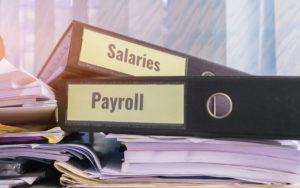
There have been some changes made to the PPP loan information we shared on June 3, 2020. Below is what we now know as of January 13, 2021.
Timing
Community financial institutions that service minority and women-owned businesses will be able to make loans to first-time PPP borrowers beginning Monday, January 11, and second-time PPP borrowers beginning Wednesday, January 13. According to the recently released SBA guidance, other borrowers and lenders will be able to participate in the program “shortly thereafter.” The last day to apply for and receive a PPP loan of any kind, whether from the first or second round, is March 31, 2021.
I – Updates on the Original PPP Program
PPP tax update:
- Expenses paid for with forgiven PPP loan proceeds are now deductible, a reversal of IRS guidance.
Amendments to the Original PPP
- Additional eligible “non-payroll” expense categories;
- Payments for any business software or cloud computing service that facilitates business operations; product or service delivery; the processing, payment, or tracking of payroll expenses; human resources; sales and billing functions or accounting or tracking of supplies, inventory, records and expenses
- Costs related to property damage and vandalism or looting due to public disturbances that occurred during 2020 that was not covered by insurance or other compensation.
- Expenditures made by an entity to a supplier of goods for the supply of goods that (i) are essential to the operations of the entity at the time at which the expenditure is made; and (ii) is made pursuant to a contract, order, or purchase order (A) in effect at any time before the covered period with respect to the applicable covered loan or (B) with respect to perishable goods, in effect before or at any time during the covered period.
- An operating or capital expenditure to facilitate the adaptation of the business activities of an entity to comply with requirements established or guidance issued by the Department of Health and Human Services, the Centers for Disease Control (“CDC”), or the Occupational Safety and Health Administration (“OSHA”) or any equivalent required requirements established or guidance issued by a state or local government, during the period beginning on March 1, 2020 and ending on the date on which the national emergency declared by the President under the National Emergencies Act related to the maintenance of standards for sanitation, social distancing, or any other worker or customer safety requirement related to COVID-19 expires.
- More flexible covered period for forgiveness;
- The Act gives a borrower the option to choose any covered period beginning on the date of the origination of a covered loan and lasting between 8 and 24 weeks, not just 8 or 24 weeks.
II – Which Forgiveness Application Should We Use?
Form 3508-S
- Only for borrowers with loans that were less than $50,000.
- Required parts:
- Signature/authorization form
- Demographic information form (optional)
Form 3508-EZ
- You can use this form if you meet one of the following requirements:
- Are self-employed and have no employees
- Have employees but did not reduce their wages by more than 25%, did not reduce employee numbers, and did not cut employee hours OR have employees but did not reduce wages by more than 25% and could not operate as normal as a result of reduced business activity due to COVID-19 health guidance compliance.
- There is no dollar threshold
- Required parts:
- Signature/authorization form
- Demographic information form (optional)
- Calculation form
Form 3508
- Only for borrowers who do not qualify to use 3508-Ex or 3508-S.
- Required parts:
- Signature/authorization form
- Demographic information form (optional)
- Calculation form
- Schedule A
- Schedule A worksheet
Regardless of which version of Form 3508 you use, you must have supporting documentation to justify your loan forgiveness request.
If your loan exceeded $2M, you will also need to complete Form 3510 (we’re awaiting further SBA guidance on this).
The No-BS Financial Playbook for Small Business CEOs
Are you tired of making costly financial mistakes? Stop guessing and start growing. Learn how to create a scalable and valuable company while minimizing risk with this playbook from a serial entrepreneur who has been in your shoes.
III – PPP “Second Draw” Loans
These loans are designated for smaller and “harder-hit” businesses.
Eligibility
- To be eligible for a 2nd Draw, applicant must have used or will use the full amount of its First Draw PPP loan on or before the expected date on which the 2nd Draw will be disbursed.
- The maximum PPP loan amount is $2 million, up to $4 million for businesses that are part of a single corporate group.
- Calculation of loan amount is average monthly payroll x 2.5, however, for applicants in the hospitality industry with a NAICS code beginning with 72, the calculation is average payroll x 3.5
- Same $100K salary limit per employee
- To maximize PPP loan amount, applicant can use the average payroll for 2020 or 2019.
- Second Draw applicants are eligible if they have 300 or less employees unless it is in the hospitality industry with a NAICS code beginning with 72.
- If applicant has more than 300 employees, they need to meet the Alternative Standard of having both Net Worth of less than $15 million and average after tax net income of less than $5 million for the past two years.
- To be eligible, the company must have experienced a revenue reduction of at least 25% in 2020 compared to 2019 for at least one (calendar) quarter or on an annual basis (in accordance with the entity’s accounting method).
- For PPP loans greater than $150,000, the applicant must submit adequate documentation to prove the 25% or more reduction in revenue.
- Banks will need to verify the documentation
- For PPP loans less than $150,000, the lender may not require this documentation at the time you submit your PPP application, but it must be submitted on or before the date applicant applies for loan forgiveness.
- For PPP loans greater than $150,000, the applicant must submit adequate documentation to prove the 25% or more reduction in revenue.
- Applicants including employer paid health insurance and retirement benefits in the calculation of the PPP loan must now provide documentation for these expenses.
Loan terms
- Generally subject to the same terms & conditions as first draw loans
- No collateral
- 1% interest rate
- 5-year maturity
- Lenders are permitted to rely on the certifications of the borrower
Loan forgiveness
- Borrowers may again choose between an eight- and 24- week covered period
- Borrowers must again meet the 60/40 cost allocation between payroll and non-payroll costs to receive full forgiveness
- Permissible and forgivable covered expenses expanded to include:
- “covered operations expenditures,” such as software and other human resources or accounting needs;
- “covered property damage costs,” defined as costs related to 2020 public disturbances that were not covered by insurance;
- “covered supplier costs,” i.e., payments for the supply of essential goods related to contracts or orders that were in place before the covered period (or, for perishable goods, before or during the covered period); and
- “covered worker protection expenditures,” meaning investments in PPE and facility modifications for safe operations, such as ventilation and filtration systems, physical barriers, and screening capabilities
- Certain other employer-provided group insurance payments have been clarified to count as payroll costs, such as group life, disability, vision or dental insurance
Applying
- The SBA has suggested that Second Draw Loan borrowers apply through their First PPP Loan lender
The information presented here should not be construed as legal, tax, accounting, or valuation advice. No one should act on such information without appropriate professional advice and after a thorough examination of the particular situation.


